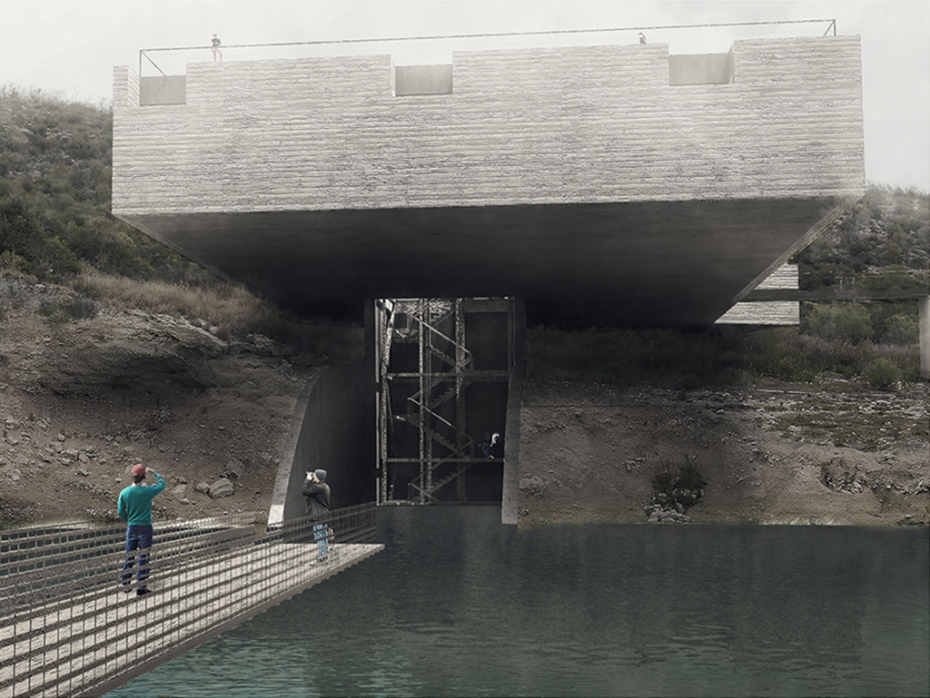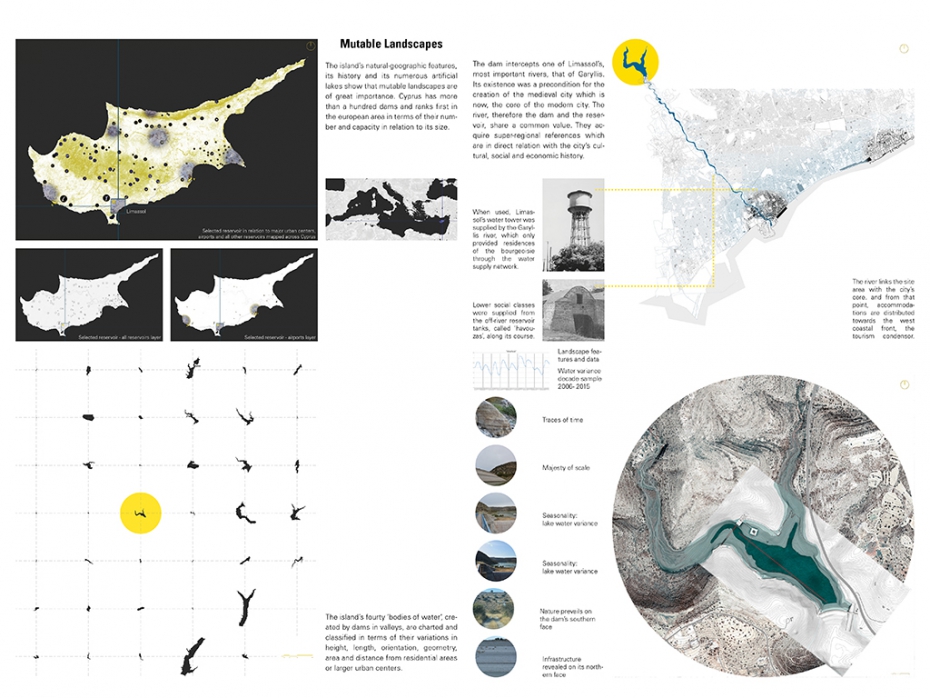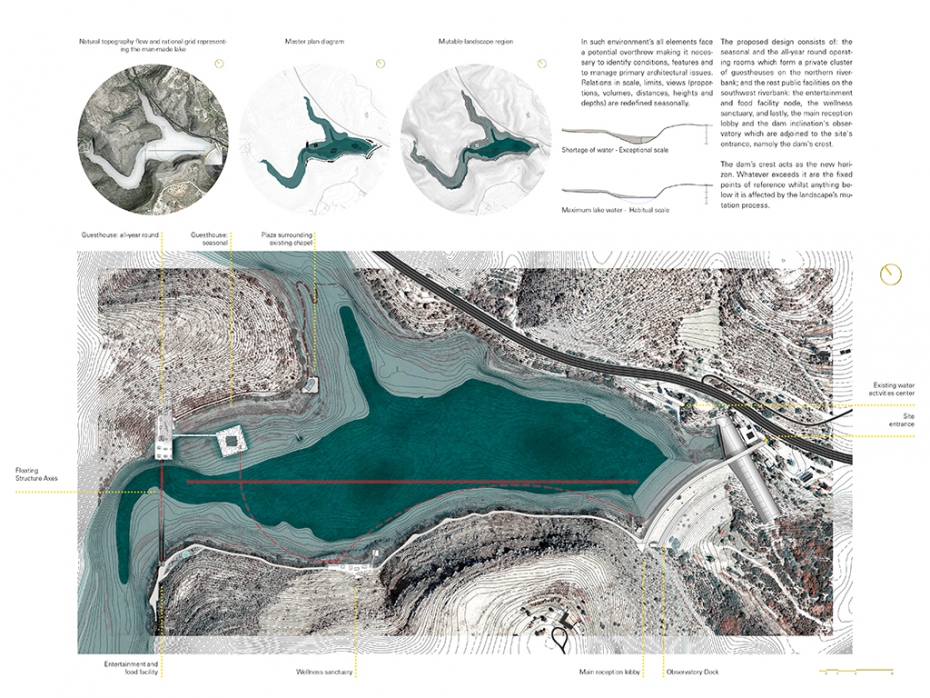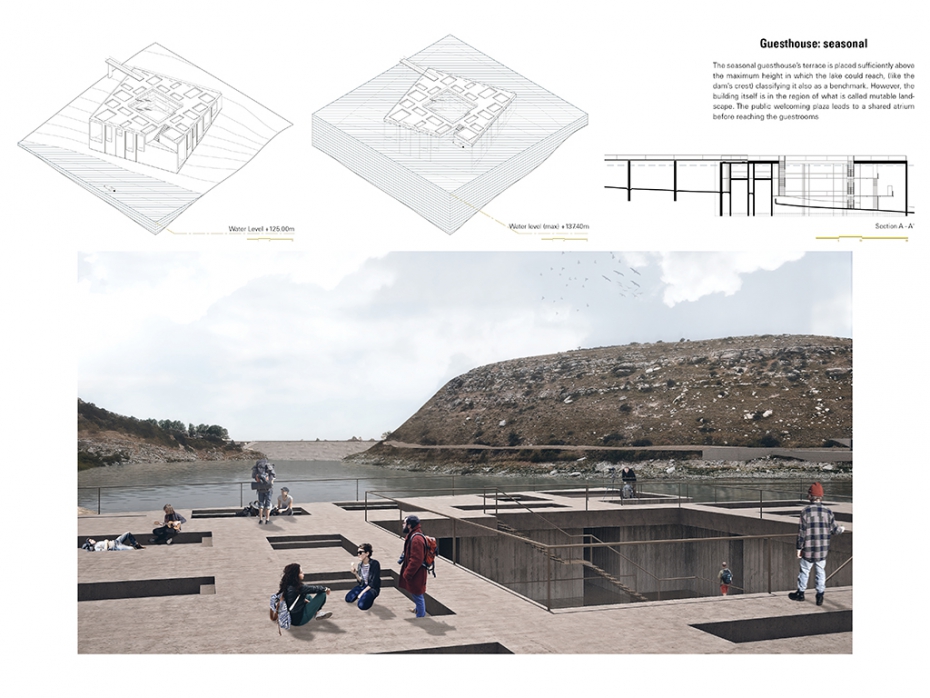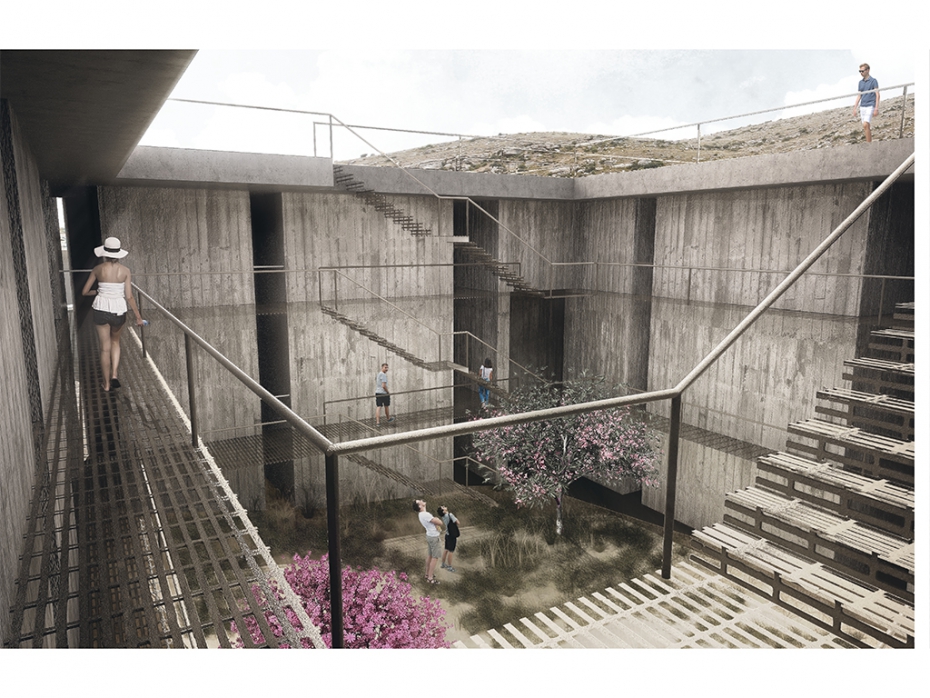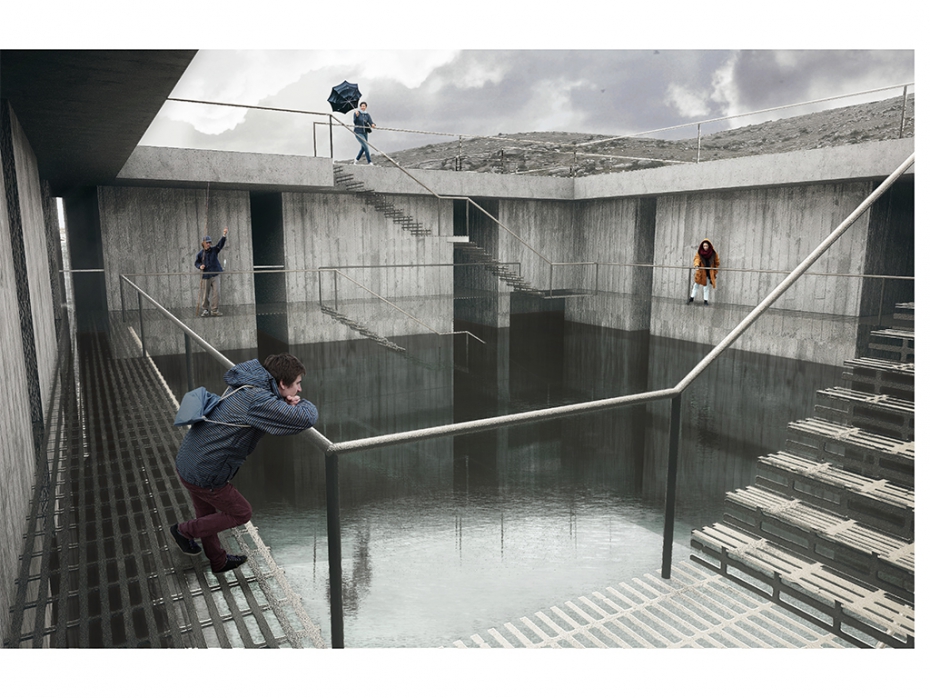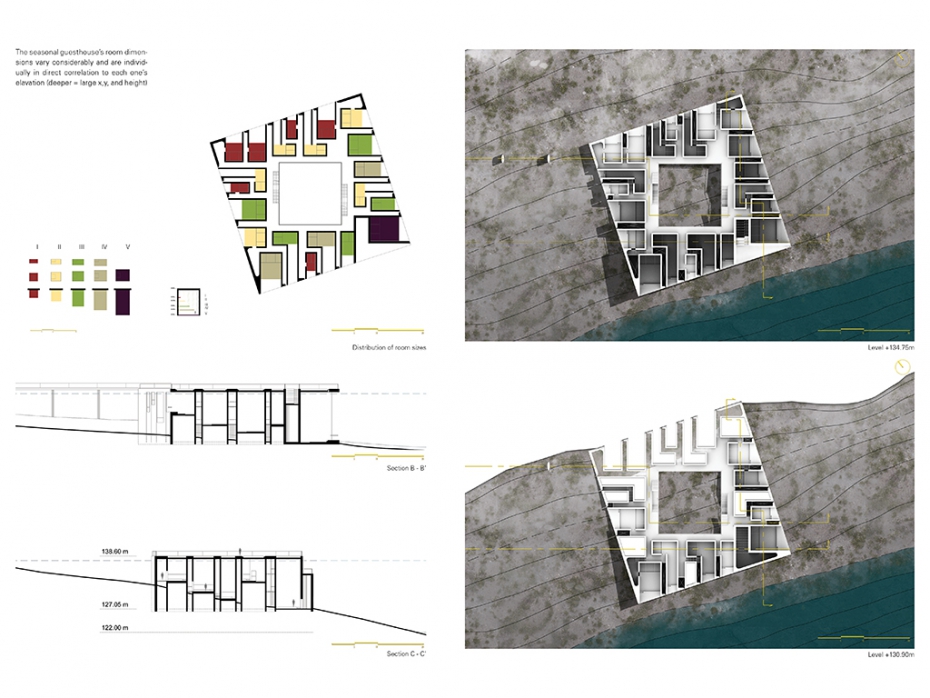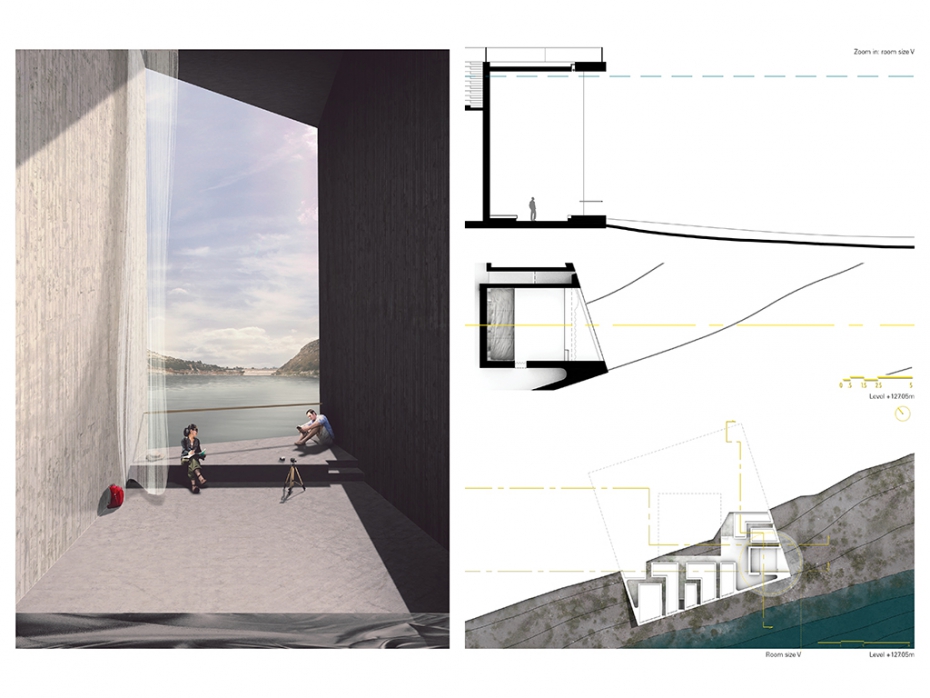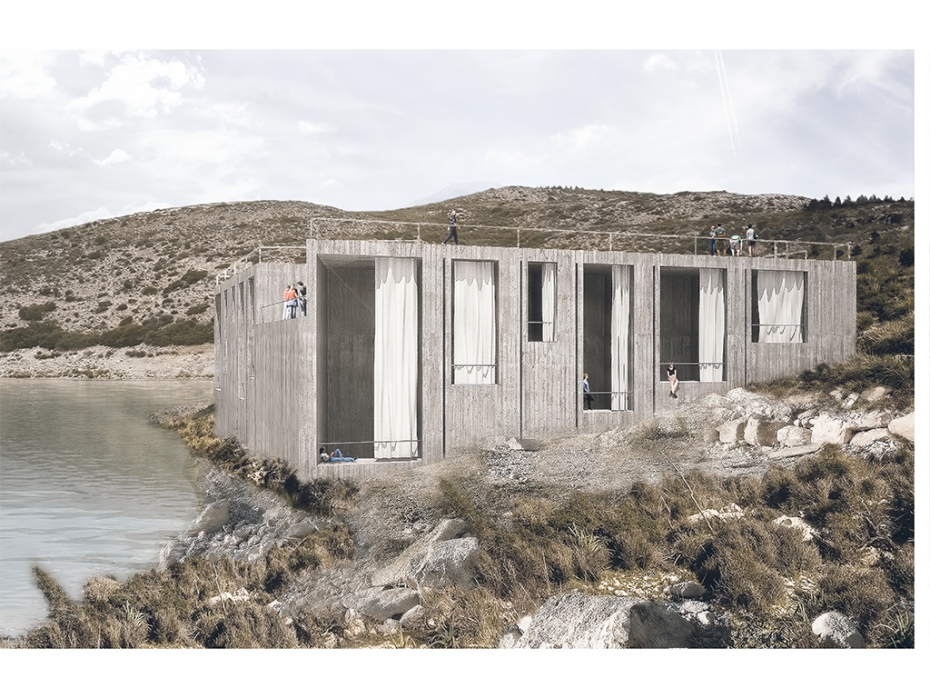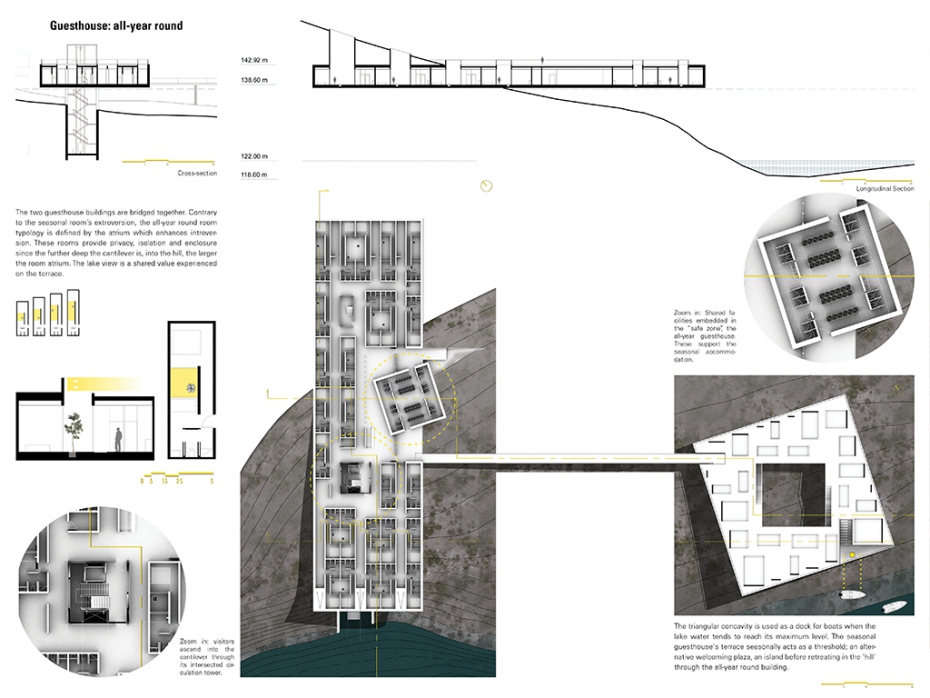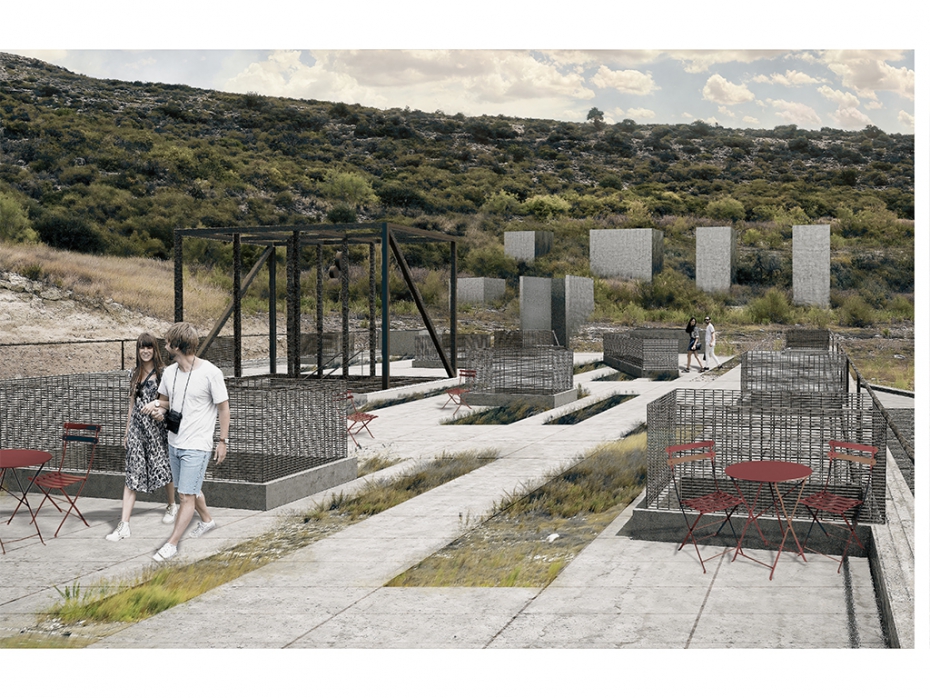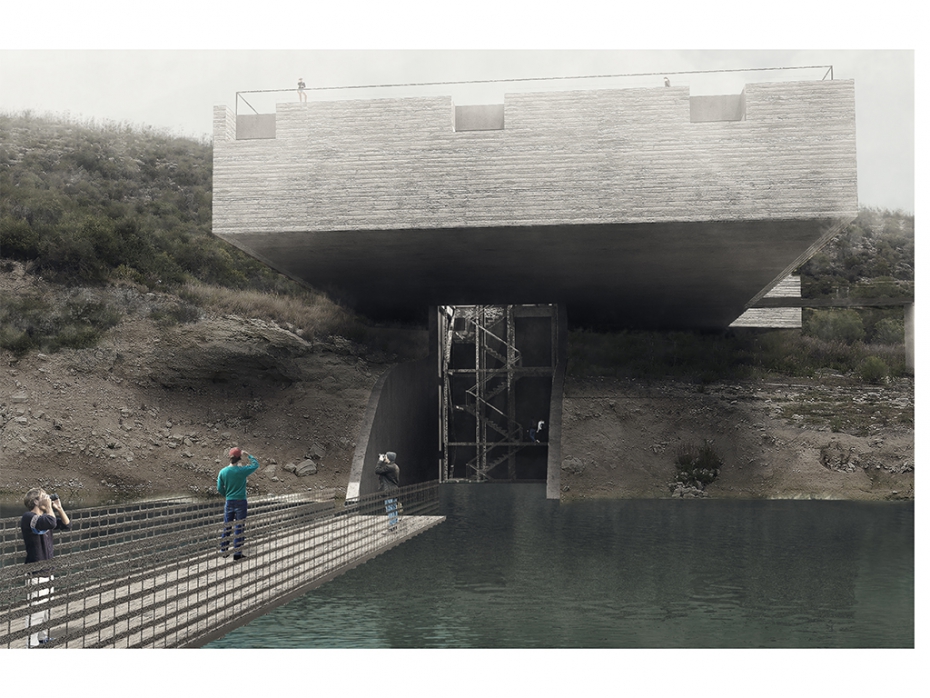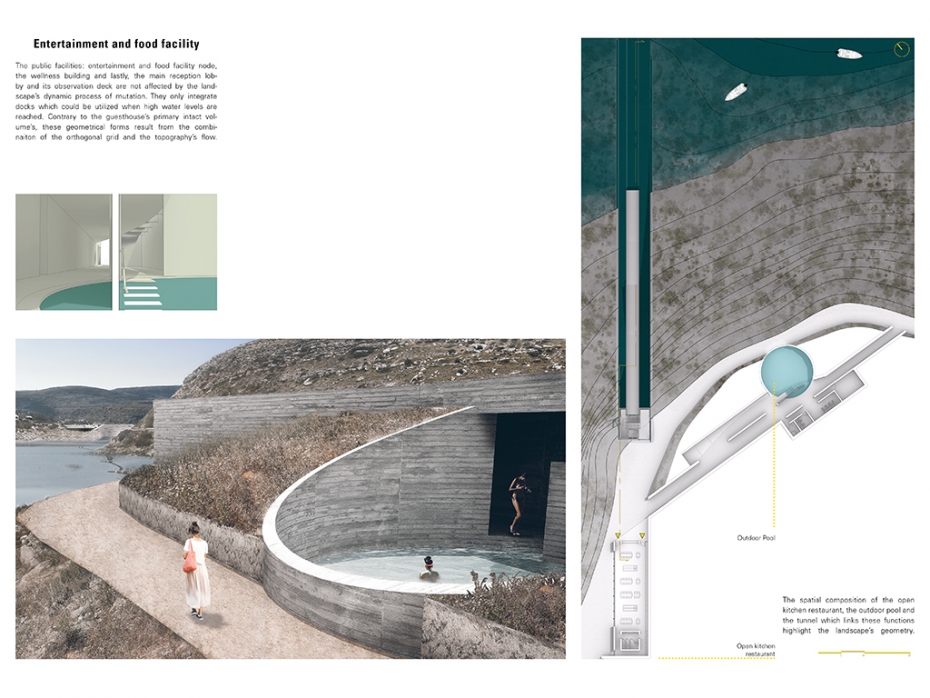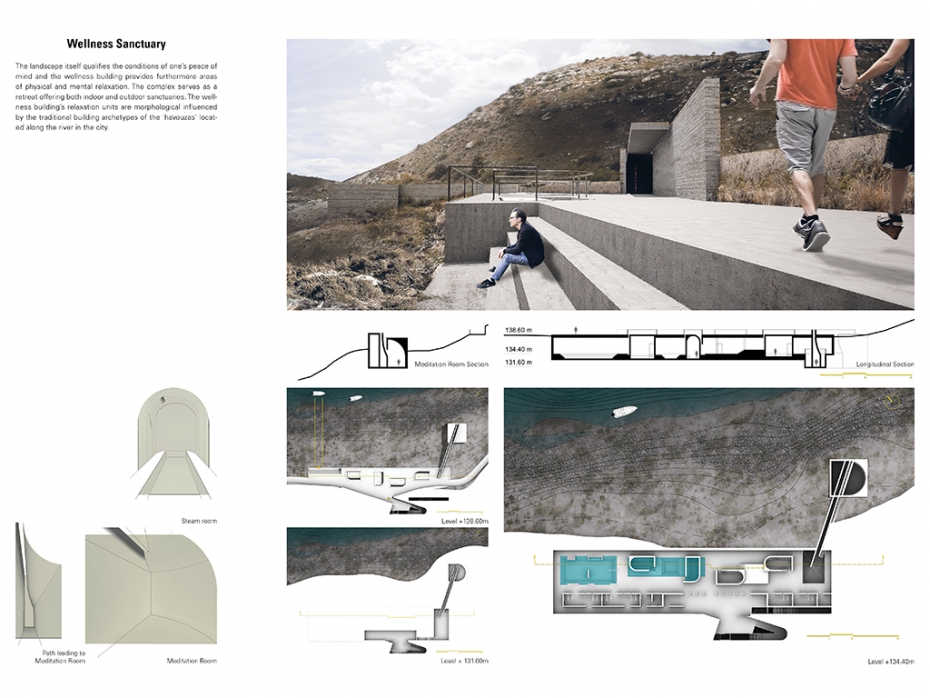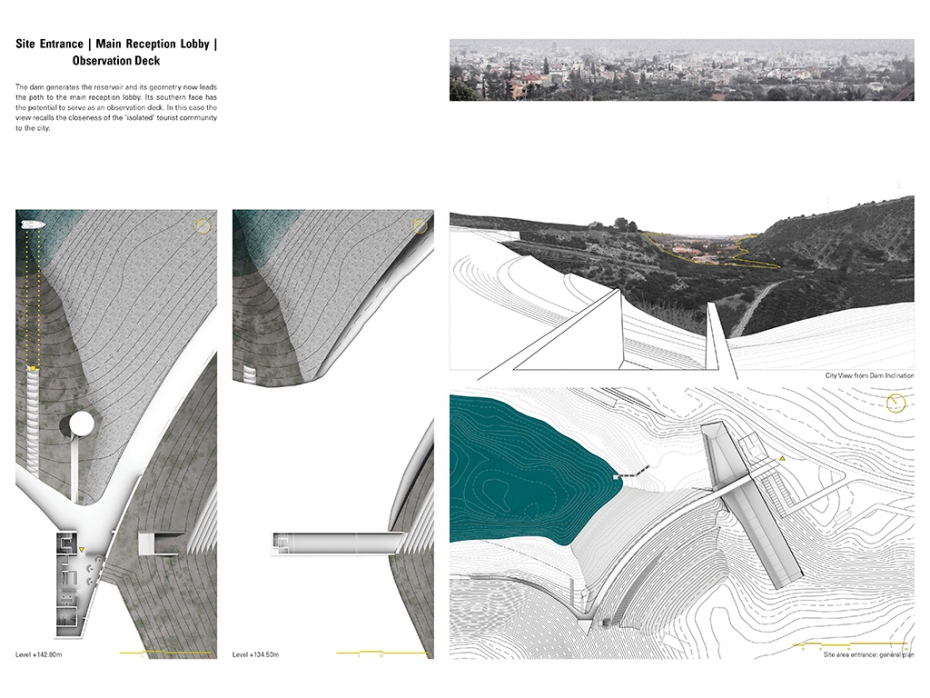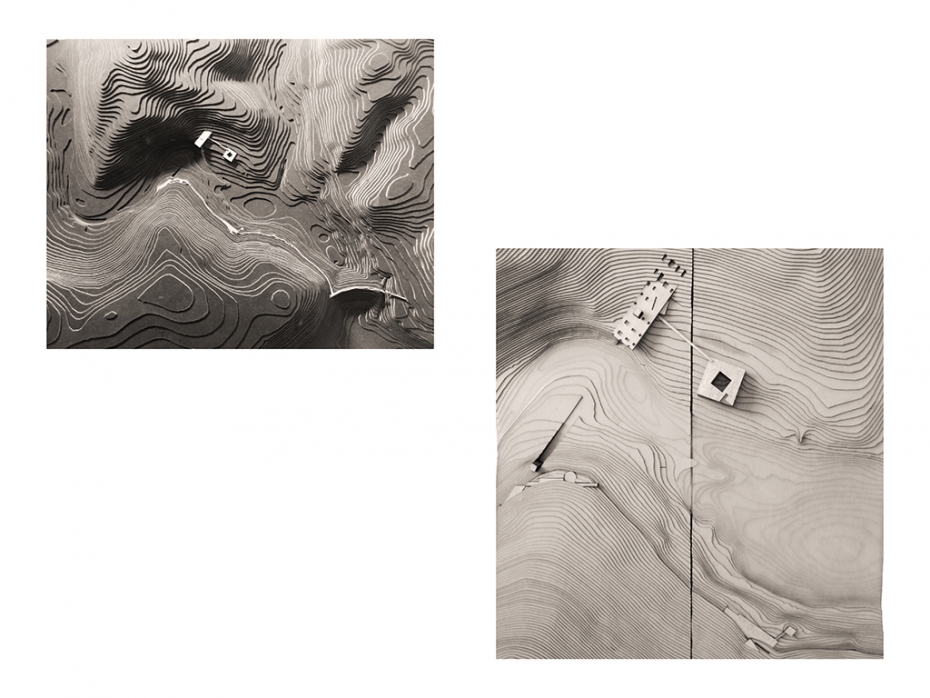The diploma thesis introduces the concept of inhabiting mutable landscapes, which has the potential to satisfy conceptual prolongations of tourism, by reimagining the perception of luxury to show that 'less is enough'. The design outcome is an active participant in the landscape’s mutation process.
Reservoirs dammed in valleys constitute mutable landscapes due to the variance of their water level which periodically redefines the correlation of their elements. These infrastructures provide the social and natural environment with benefits and complications respectively, but in doing so they reshape the landscape scenery making it peculiar and valuable for visitors. The proposal takes place in Cyprus and particularly in its southern city of Limassol. Amongst the most commercialized attractions in the heart of the city, the Garyllis river bed is found. A gesture of spatial and symbolic withdrawal from mainstream trends by conceivably following the river’s flow in reverse, leads to an artificial lake –the site area.
The landscape’s elements, conditions and data are identified and utilized by managing primary architectural issues in order to create spatial combinations which configure an architecture referred to itself. The subtractive procedure of decay is rephrased as the decomposition of spatial systems while the landscape’s topography and dynamic process of mutation justify the creation of primary geometrical forms which allow the site’s nature to prevail upon their stagnation. The ubiquitous presence of the rough terrain, the infrastructure, and the majesty of the landscape’s scale encourages rustic aesthetics and exceptional proportions to be applied; which reinforce the site’s monumental presence. Seasonality is not only a phenomenon which changes the landscape’s scenery. It is utilized as a design parameter that affects functions and uses such as: accommodation capacity, building accesses and lastly, outdoor circulation and activities. The experience as a whole is altered and then further’s the public’s interest in different ways at different times of the year. A sense of activity that seasonally changes the intensities amongst visitors is created by upgrading and further exploiting such understated landscape infrastructure.
The mutable landscape generates an experimental tourism inhabitation model of innovative primitivism based on designing events derived from the site's natural processes which are conceived as an act of performance. In order to inhabit the mutable landscape by such way, the hospitality industry's approach to fundamental issues are reevaluated. By eliminating unnecessary materialism, spatially repositioning established comforts and amenities and lastly, reconsidering introverted, extroverted, private, communal and public space, the concept of an ascetic and collective habitation. The conventional interpretation and perception of the idea of luxury is disputed, reassessed and questioned by offering necessities in an amplified way and focusing on the natural spectacle. The landscape itself could be viewed as a retreat while the design principles reinforce this notion and encourage visitors who perceive tourism as a "sacred ritual process" to reflect to their inner thoughts.

